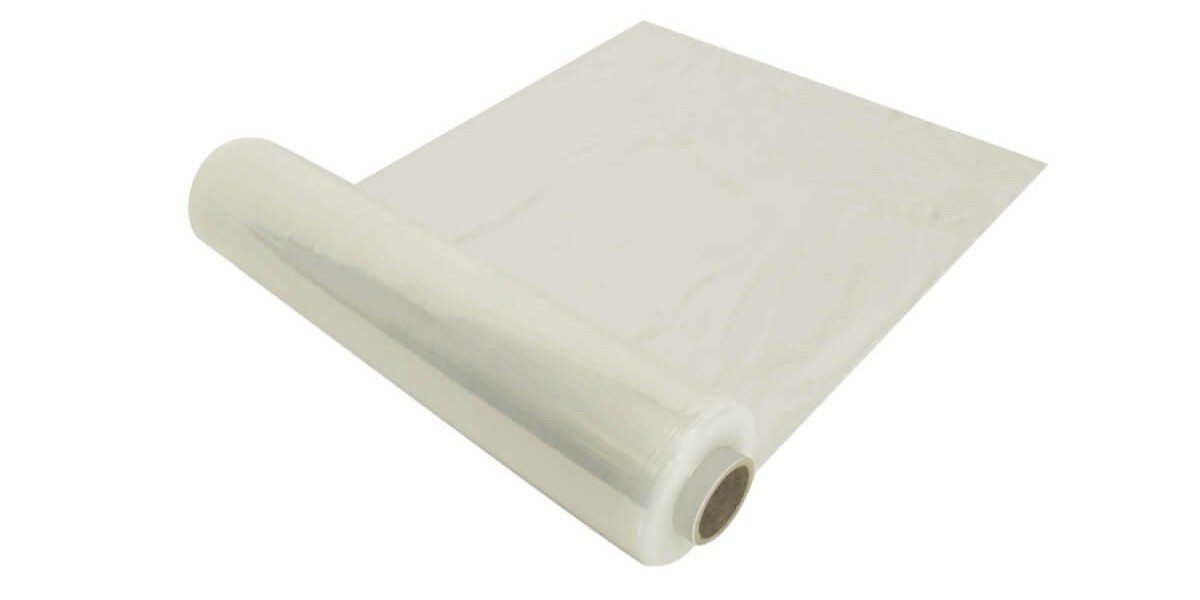Pallet wrap is essential in today’s shipping and packaging industry. If you’ve ever seen pallets neatly wrapped in a stretchy plastic film, you’ve witnessed the role of pallet wrap in keeping products secure and organized during transport. But why is it so popular, and what types are available? This guide dives deep into everything you need to know about pallet wrap: its types, benefits, and best uses. Whether you're a business owner or just curious about logistics, this guide has got you covered.
1. What is Pallet Wrap?
Pallet wrap, also known as stretch film or stretch wrap, is a flexible plastic film designed to keep items tightly secured on pallets during shipping and storage. Imagine a giant rubber band but in a film format its elasticity helps hold items in place, preventing movement and damage.
2. Types of Pallet Wrap
Pallet wrap comes in several varieties, each suited to different applications and types of cargo. Let’s explore the most common types:
a) Cast Stretch Film
Cast stretch film is manufactured using a cast extrusion process, giving it clarity and a smooth texture. This type is ideal for situations where you need a transparent wrap to quickly identify products on the pallet.
b) Blown Stretch Film
Blown stretch film is made through a blown extrusion process. It has a rough texture and excellent resistance to tears, making it suitable for items with sharp edges or irregular shapes.
c) Pre-Stretched Film
Pre-stretched film is already stretched before application, making it easier to use and less physically demanding. This type is a great option for manual wrapping as it reduces the effort needed to wrap pallets tightly.
d) Specialty Stretch Films
These include UV stretch film for outdoor storage, anti-static film for electronics, and colored or opaque films for branding or privacy.
3. Benefits of Using Pallet Wrap
Why is pallet wrap so widely used? Here are some of its standout benefits:
Protection Against Damage: Pallet wrap keeps items firmly in place, preventing them from shifting and getting damaged during transit.
Cost-Effective: Using pallet wrap is often cheaper than alternative packaging methods, saving costs on additional packing materials.
Weather Resistance: Certain types of pallet wrap offer protection from dust, moisture, and even UV rays, making it ideal for outdoor storage.
Enhanced Security: Opaque or colored pallet wraps can help conceal high-value items, reducing the risk of theft.
4. Choosing the Right Pallet Wrap
Selecting the right type of pallet wrap depends on several factors, including the type of items being wrapped, the storage environment, and whether you’re using a machine or wrapping by hand. Blown stretch film is ideal for heavy-duty needs, while pre-stretched film suits smaller, lighter loads.
5. Hand Pallet Wrap vs. Machine Pallet Wrap
Both hand and machine pallet wraps have their benefits and drawbacks. Here’s a closer look:
a) Hand Pallet Wrap
Ideal for smaller operations, hand pallet wrap is cost-effective and doesn’t require expensive equipment. However, it can be physically demanding, especially when wrapping heavy or large loads.
b) Machine Pallet Wrap
Machine pallet wrap offers consistency and speed, making it perfect for large-scale operations. While it requires an upfront investment in machinery, the efficiency gains often justify the cost.
6. Applications of Pallet Wrap
Pallet wrap isn’t just for warehouses or shipping centers. Here are some common applications:
Manufacturing: Securing raw materials and finished goods.
Retail: Wrapping inventory for transport to various store locations.
Food and Beverage: Protecting food products from contamination.
Automotive: Keeping parts and components in place during transit.
7. Safety Tips for Using Pallet Wrap
Using pallet wrap might seem straightforward, but there are a few safety tips to keep in mind:
Avoid Overwrapping: Excessive wrapping can lead to waste and increase costs.
Use Proper Equipment: Ensure you have a quality dispenser for hand wrapping.
Train Employees: Educate workers on the best techniques for pallet wrapping to avoid injuries.
8. Environmental Considerations
While pallet wrap offers numerous benefits, it does raise environmental concerns due to its plastic nature. Thankfully, options like biodegradable and recyclable films are now available. By choosing eco-friendly materials and recycling where possible, companies can reduce their environmental impact.
9. Best Practices for Pallet Wrapping
Achieving a secure wrap requires following some best practices:
Tighten the Wrap: Ensure each layer is snug to prevent items from shifting.
Use Multiple Layers: For heavier loads, multiple layers add strength and stability.
Check for Proper Overlap: Overlapping each pass of the film provides better coverage.
10. Top Pallet Wrap Products on the Market
The market offers a wide range of pallet wrap products, from economy options to heavy-duty films. Some top-rated brands include:
StretchFlex: Known for its durability and tear resistance.
Wraptite: An affordable, all-purpose option.
PolyStrech: Offers eco-friendly and high-performance options.








